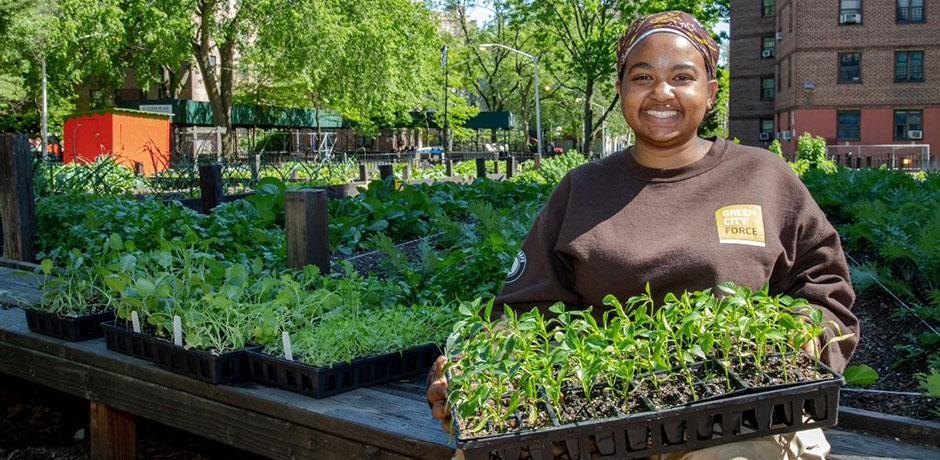The 30-Second Trick For City Blooming
The 30-Second Trick For City Blooming
Blog Article
The Definitive Guide for City Blooming
Table of ContentsCity Blooming Things To Know Before You Get ThisCity Blooming - QuestionsCity Blooming - An OverviewSee This Report about City BloomingThe 2-Minute Rule for City Blooming
Fascinated in growing food for sale in the City of Chicago? Thinking of starting a neighborhood garden? Adjustments to the Chicago Zoning Ordinance enable agricultural usages like community gardens and urban ranches in lots of components of the city. Below is a list of frequently asked questions concerning the policies and policies that growers need to consider when intending a city farming job.
The zoning change does not modify any type of various other codes managing composting, building licenses, acquiring or leasing City possessed building, organization licenses or environmental contamination. There are existing codes that control these problems and they stay in complete effect and might be appropriate to your project. Area gardens are typically owned or managed by public entities, public organizations or community-based companies and kept by volunteers.
Urban ranches grow food that is intended to be marketed, either on a not-for-profit or for-profit basis. Due to their commercial purpose, urban farms require a service license. Yes. A community garden is permitted to offer surplus generate that was grown on website if the sales are accessory or subordinate to the yard's main objective explained above.
8 Simple Techniques For City Blooming
Composting is permitted however only for plant product that is produced and used on site. The amount of garden compost material can not go beyond 25 cubic backyards at any type of provided time according to the criteria in 7-28-715 of the City's Municipal Code. Yes. Due to the fact that the soil at many new yard websites needs amending, garden compost, soil, wood chips, or various other materials can be acquired to construct or improve the expanding area - balcony and patio garden design.

If a structure license is required after that the hoophouse will be taken into consideration an accessory structure. You can learn more concerning the building license needs by calling the Department of Structures. The 25,000-square-foot dimension restriction is intended to avoid a single neighborhood yard from controling a provided block or interfering with the block's existing household or industrial character.
The limitation does not relate to yards found in Public Open Room (POS) districts. Can there be even more than one community garden that is 25,000 square feet on a solitary block? Yes. The size limit applies to specific gardens, not to individual blocks. No. Fencing is not required, however, gardens that have big car parking areas may be called for to install fencing or various other landscaping functions.
The Greatest Guide To City Blooming
B1 & B2 areas call for that all commercial usage tasks be performed inside. Is fence needed for metropolitan farms? Fencings may be needed, along with landscape design and testing, for certain auto parking locations and outdoor job or storage space areas depending on location and the specific activity taking area.
Urban ranches need building authorizations and zoning approvals prior to construction (landscaping). Various other kinds of city evaluation might be required depending on details frameworks, activities, size, landscape design, licensing, public heath and stormwater monitoring problems.
Yes. The type of certificate is identified by what is happening at the site. The Department of Company Matters and Consumer Protection can help determine the specific sort of service permit that's needed. Yes. Off road auto parking is needed for the majority of business projects in Chicago. The called for number of parking rooms is based straight from the source on the variety of workers servicing website and not the square video of the expanding space.
City Blooming Things To Know Before You Buy

Yes. A metropolitan ranch can market compost material produced on site, nonetheless, the operation should follow the regulations in 7-28-715 of the Chicago Municipal Code. Yes. Aquaponic systems are allowed inside your home on urban farms in numerous zoning districts. A zoning testimonial and structure permit is called for in order to set up frameworks or systems and a company license is required as defined over.
Up to five hives or colonies of honey might be maintained as an accessory use. Beekeepers should register with the Illinois Department of Farming. For more details regarding the recommended zoning modification you might contact the Department of Real Estate and Economic Growth, Bureau of Preparation and Zoning at 312.744.8563.
, which takes place in rural locations at the side of residential areas.
The 25-Second Trick For City Blooming
, that seek to develop social networks established on a common ethos of nature and neighborhood holism. These networks can establish by method of formal institutional assistance, coming to be integrated right into regional community planning as a "shift community" activity for sustainable city development.
In either instance, the much more straight accessibility to fresh vegetable, fruit, and meat products that might be understood via metropolitan farming can enhance food security and food safety while reducing food miles, causing reduced greenhouse gas exhausts, thereby contributing to environment adjustment reduction. Several of the first evidence of city agriculture comes from Mesopotamia.
Report this page